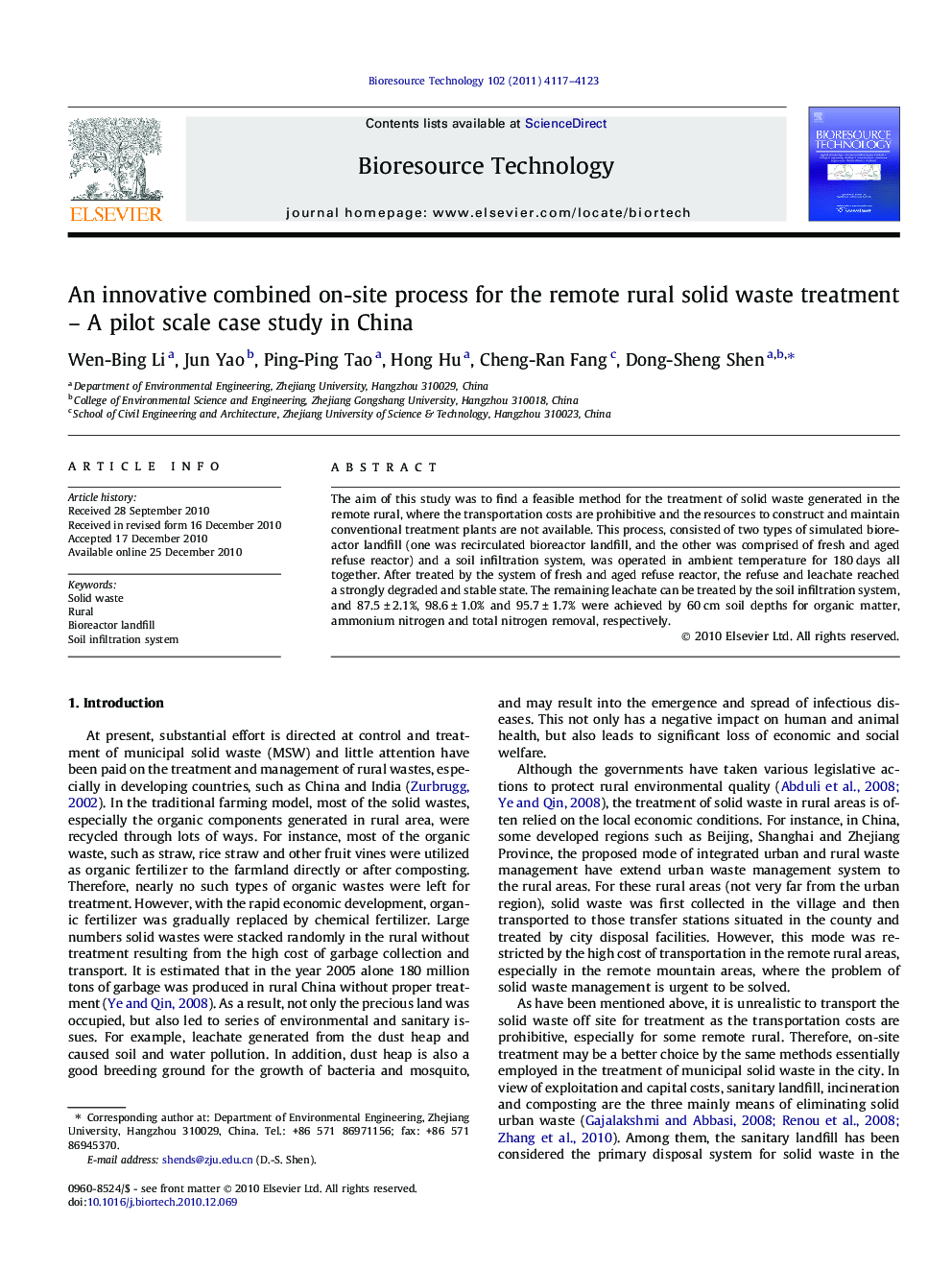| Article ID | Journal | Published Year | Pages | File Type |
|---|---|---|---|---|
| 10395259 | Bioresource Technology | 2011 | 7 Pages |
Abstract
The aim of this study was to find a feasible method for the treatment of solid waste generated in the remote rural, where the transportation costs are prohibitive and the resources to construct and maintain conventional treatment plants are not available. This process, consisted of two types of simulated bioreactor landfill (one was recirculated bioreactor landfill, and the other was comprised of fresh and aged refuse reactor) and a soil infiltration system, was operated in ambient temperature for 180 days all together. After treated by the system of fresh and aged refuse reactor, the refuse and leachate reached a strongly degraded and stable state. The remaining leachate can be treated by the soil infiltration system, and 87.5 ± 2.1%, 98.6 ± 1.0% and 95.7 ± 1.7% were achieved by 60 cm soil depths for organic matter, ammonium nitrogen and total nitrogen removal, respectively.
Keywords
Related Topics
Physical Sciences and Engineering
Chemical Engineering
Process Chemistry and Technology
Authors
Wen-Bing Li, Jun Yao, Ping-Ping Tao, Hong Hu, Cheng-Ran Fang, Dong-Sheng Shen,
